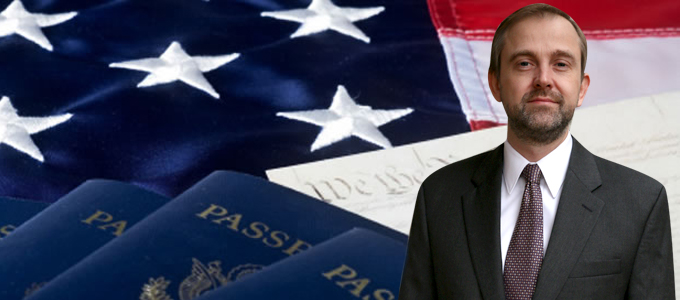Fiance(e) Visa K-1

Fiance(e) Visa K-1
A United States citizen can bring his fiancée (or her fiancé) from abroad into the U.S. on a Fiancé(e) K-1 Visa for the purpose of marrying that fiancé/fiancée.
The process starts with the U.S. citizen (“Petitioner”) petitioning on Form I-129F for the foreign fiancé(e) (“Beneficiary”). The I-129F is filed domestically with the appropriate U.S. Citizenship and Immigration Services (“USCIS”) office. The form must be supported by requisite documentation, including that the Petitioner and Beneficiary met in person within the last two (2) years (there are exceptions).
If the USCIS approves the I-129F Petition, the file is sent onto the U.S. Department of State’s National Visa Center (“NVC”). The NVC runs a number of background checks. If the NVC finds no objectionable information, the case is sent to the Consulate or the Consular Section of the Embassy having jurisdiction over the case. This is usually, but not always, the Consulate nearest to where the Beneficiary resides.
The Consulate informs the Beneficiary that it received the file. The Beneficiary must complete certain forms and gather requested items. Mainly, the items include a police certificate from each place the Beneficiary lived showing no criminal history; medical examination by a Consulate approved physician; proof of payment of the interview fees, often through a local bank. More and more Consulates are using online technology that Beneficiary must access to complete forms and submit his or her photographs.
Consulates require an affidavit of support to be provided on Form I-134. It is a good idea to submit the I-134 along with the initial I-129F filing. The I-134 should be supported by Petitioner’s recent pay stubs; a letter from Petitioner’s employer attesting to the Petitioner’s employment, position and income; most recent federal income tax return with all forms W-2 and 1099. If the Petitioner’s income is less than 125% of official poverty income, a joint sponsor will most likely be necessary.
Once the Consulate receives confirmation from the Beneficiary that all forms and required items are ready, an interview can be scheduled. Some Consulates require scheduling by telephone (through a pay line), while others allow scheduling online.
The Beneficiary must bring all required items and forms to the Consulate for the interview. It is advisable that the Beneficiary bring copies of everything that has been sent to and received from USCIS, NVC and the Consulate to the interview. The interviews are usually short, lasting a few minutes. The Consular Officer may retain Beneficiary’s passport.
Note that if the Petitioner has had a history of domestic violence or similar criminal convictions, such information can and most likely will be disclosed by the Consular Officer to the Beneficiary. The Consular Officer will likely ask the Beneficiary if s/he was aware of this information and if s/he still wants to proceed.
After the interview, if the visa is approved, the Consulate will likely mail the Beneficiary his/her passport with the K-1 Visa. If the Beneficiary has an unmarried minor child, that child would receive a K-2 Visa.
Once the Beneficiary enters the U.S. on the K-1 Visa, she or he must marry the U.S. citizen fiancé(e) that filed the Petition within 90 days. As soon as possible after the marriage, it is advisable that the Beneficiary apply to adjust his/her status to a permanent resident (green card holder), as well as for temporary work authorization and advance parole (temporary permission to travel).
If the K-1 Visa holder and his/her Petitioner do not marry within 90 days of the Beneficiary’s entry into the U.S., the Beneficiary is out of status and subject to removal (formerly deportation) from the U.S. A K-1 Visa holder cannot adjust status to a permanent resident based upon marriage to a U.S. citizen other than the Petitioner and cannot change status to another visa category (with very limited exceptions).
K-1 visas have been used to join foreign fiancé(e)’s from all over the world with their U.S. citizen fiancé(e)’s. Many have resulted in healthy and happy relationships. While the foreign Beneficiaries can be male or female, and come from anywhere in the world, most are female, and come from certain regions, in particular Eastern Europe (Russian and other former Soviet Republics, Ukraine, Kazakhstan, etc.) and Southeast Asia (in particular, Philippines and Thailand, but also others).
Note that the K-1 process is available to same-sex couples.
If you wish to learn more, please contact me.



